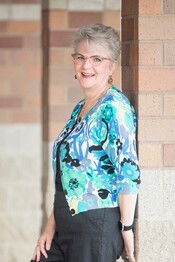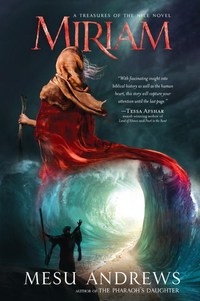You know those interviews on blogs, where the author reveals something about themselves you probably didn’t know? I’m about to do that. (Deep breath, clearing my throat.)
I was on a dance team during my senior year of high school. This may not seem like a major revelation to some, but if you knew how utterly uncoordinated I am, you’d gasp. I have two left feet and ten big toes. It’s tragic, really.
The team’s director had only one reason for allowing me within fifty yards of her national-championship dance team: I could twirl a rifle—you know the color guard fiberglass rifle-looking thing? Yep. I could spin it, toss it, catch it, hoist it, and set nice crisp angles on call. And Ms. D. wanted her dance team to incorporate rifles into their routine for that year. She and I struck a deal. I would teach her petite, graceful beauties to twirl those fiberglass sticks. In exchange, her best dancers would teach me to move in some sort of rhythm without falling on my face. Her dance instructors got the raw end of that deal.
Why am I telling you this? Because in MIRIAM, my new release, the title character dances. She’s eighty-six-year-old, and she dances! Seriously?
Do you know the story—Moses, the Ten Commandments, Charlton Heston, Disney’s Prince of Egypt? My story begins with Miriam believing her life is nearing the end despite her family history of long lives (her parents are still living at 137 and 110 years old). She’s understandably disheartened, having lived her whole life as a Hebrew slave in Egypt, and she’s ready to leave this cruel world. Her bones creak, and she has to rock back-and-forth a few times to get to her feet. Does this sound like much of a heroine?
Enter Moses, her brother. Remember him from the Ten Commandments or maybe you Disney’s Prince of Egypt. Whether you’ve watched the movies or read the biblical account in Exodus 3-15, they all record the epic battle between Pharaoh and the Hebrew God, the plagues, and the parting of the Red Sea. But none of them considered the story from Miriam’s point-of-view. Or from the perspective of other Hebrew slaves—a harem maid banished from the palace or a soldier slave who serves the firstborn prince?
When I read the Bible story, I wanted to know how Pharaoh’s stubborn refusal to “Let Yahweh’s people go!” affected the folks who didn’t have Moses’s intimate knowledge of God’s next move. Can you imagine how terrifying those plagues would have been to “normal” people like you and me? Most of them had no warning the Nile would turn to blood or the locusts would destroy their crops.
While writing MIRIAM, I found it challenging to imagine the Egyptian plague scenes while sitting in my suburban two-story home. The miraculous parting of the Red (Reed) Sea also stretched my imagination even when I visited the nearby Columbia River and tried to envision it. But I was completely fascinated by the eighty-six-year-old dancer who stood on the opposite shore after crossing the Red Sea on dry ground…
“Then Miriam the prophet, Aaron’s sister, took a timbrel in her hand, and all the women followed her, with timbrels and dancing.” (Exodus 15:21 NIV)
Why make such a big deal of Miriam’s dancing? Because I know how difficult it was for me as a teenager. I couldn’t appreciate golf until I tried to play eighteen holes. The most powerful impact of historical and biblical fiction comes when we climb into the character’s skin, remembering that they were real people who lived with real limitations, flaws, and yearnings. Think of an eighty-six-year-old that you know, and try to imagine her doing a jig with a tambourine.
Stories like Miriam’s are told and retold for generations—even millennia—because they inspire. Let’s face it. No one cares that I felt like a tortoise in tennis shoes when I danced, but when an elderly lady runs across a dry sea bed and leads a nation of women in dancing…now someone should write a book about that. So I did.
Do you know a Miriam? A mother, an aunt, a senior saint in your church, who defies her aging body and leads with spunk and determination? Share a little about her if you’d like.
Giveaway
Tell us if you know or are a Miriam. One commenter will win a copy of MIRIAM and a Bath & Body Works gift card worth 10.00.
About Mesu Andrews
Mesu Andrews’ deep understanding of and love for God’s Word brings the biblical world alive through her highly-acclaimed historical/biblical novels. Her sixth book, Miriam: A Treasures of the Nile Novel, released March 15, 2016.
WEBSITE | FACEBOOK | TWITTER | YOUTUBE | GOODREADS | GOOGLEPLUS | PINTEREST
About MIRIAM
The Hebrews call me prophetess, the Egyptians a seer.
But I am neither. I am simply a watcher of Israel
and the messenger of El Shaddai.
When He speaks to me in dreams, I interpret. When He whispers a melody, I sing.
At eighty-six, Miriam had devoted her entire life to loving El Shaddai and serving His people as both midwife and messenger. Yet when her brother Moses returns to Egypt from exile, he brings a disruptive message. God has a new name – Yahweh – and has declared a radical deliverance for the Israelites.
Miriam and her beloved family face an impossible choice: cling to familiar bondage or embrace uncharted freedom at an unimaginable cost. Even if the Hebrews survive the plagues set to turn the Nile to blood and unleash a maelstrom of frogs and locusts, can they weather the resulting fury of the Pharaoh?
Enter an exotic land where a cruel Pharaoh reigns, pagan priests wield black arts, and the Israelites cry out to a God they only think they know.




No Comments
Comments are closed.